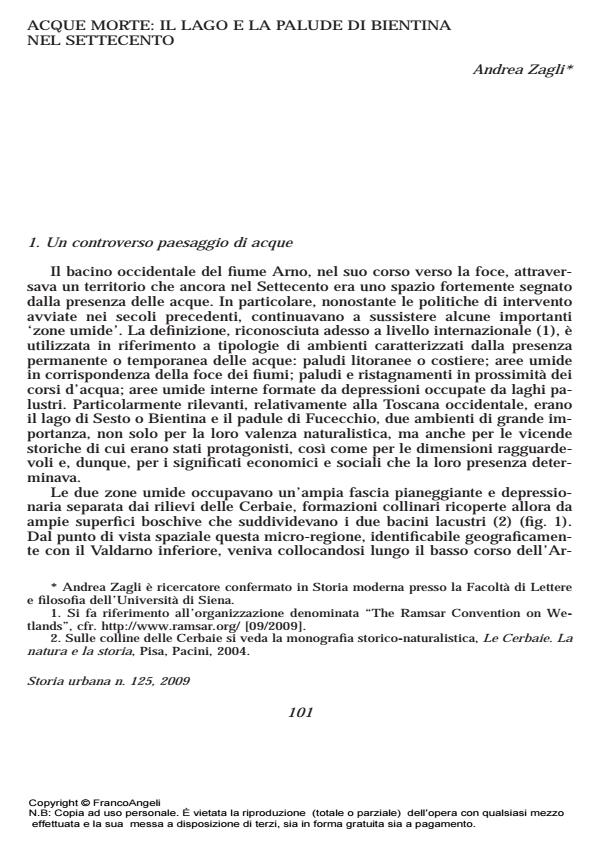Acque morte: il lago e la palude di Bientina nel Settecento
Journal title STORIA URBANA
Author/s Andrea Zagli
Publishing Year 2010 Issue 2009/125 Language Italian
Pages 31 P. 101-131 File size 1221 KB
DOI 10.3280/SU2009-125006
DOI is like a bar code for intellectual property: to have more infomation
click here
Below, you can see the article first page
If you want to buy this article in PDF format, you can do it, following the instructions to buy download credits

FrancoAngeli is member of Publishers International Linking Association, Inc (PILA), a not-for-profit association which run the CrossRef service enabling links to and from online scholarly content.
Stagnant waters: the lake and swamp of Bientina in the eighteenth century - Water Tuscany Swamp Wetlands Drainage The case of the swamp of Bientina, a large wetland drained in 1859-60, is studied with the purpose of pointing out its historical complexity and contradictions. The existence of a political boundary between Lucca and Florence and the presence of divergent interests postponed every technical solution and project to solve hydraulic problems of the basin till the middle of the eighteenth century. This study aims at explaining how backwaters of Bientina were in the eighteenth century a very complex and multiform wet environment, described as such in historical cartographic sources. Opposite to "marshy" stereotype, we can argue "dead waters", as they are called in Italian, were very "living" ones, a wet environment with important forms of economic exploitation and social organization. During the eighteenth century reforms, a new idea of progress was increasing agricultural development by reducing and draining wetlands. It was not an inevitable step, but a gradual and very debated success of another way of using and exploiting wet environments.
Andrea Zagli, Acque morte: il lago e la palude di Bientina nel Settecento in "STORIA URBANA " 125/2009, pp 101-131, DOI: 10.3280/SU2009-125006